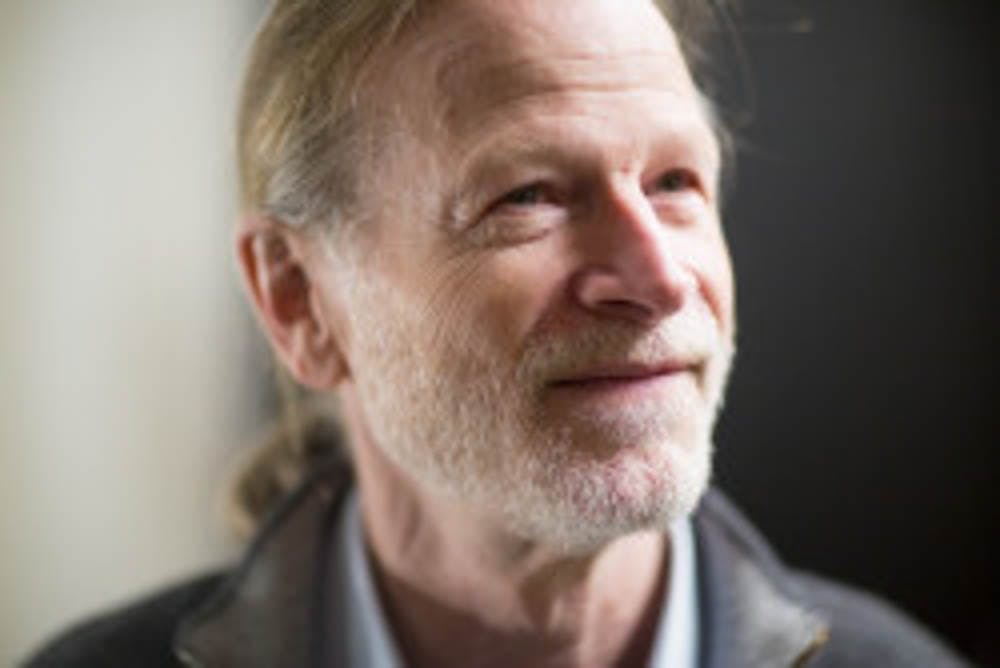Monday afternoon, students and faculty members gathered to learn about the latest advancements in detecting gravitational waves — ripples in space-time that occur after large-scale collisions between celestial entities, such as two black holes.
David Shoemaker, who leads the Advanced Laser Interferometer Gravitational-Wave Observatory — which first detected the waves’ existence in 2016 — spoke about how the use of interferometers has improved the precision of astrophysics and the detection of gravitational waves. The observatory launched a third experiment to detect gravitational waves earlier that day.
LIGO is the world’s largest gravitational wave observatory consisting of two laser interferometers, according to its website. The interferometers merge sources of light to create inference patterns and make small measurements that can detect gravitational waves.
Shoemaker, who is also a senior research scientist at the Massachusetts Institute of Technology Kavli Institute, began his talk by sharing the history of scientific research on the waves. For instance, Albert Einstein claimed that these waves existed but were impossible to observe. But through the use of the two L-shaped instruments at LIGO, physicists can now detect these events, he said. “With any technology one could have imagined at that time when (Einstein) came up with this theory, … it would (have been) a fool’s errand to try and detect gravitational waves,” he added.
In 2010, LIGO transitioned to using cutting-edge detectors, which feature an order of magnitude better amplitude sensing and reach, Shoemaker explained. “What (was) really striking was the improvements we made at low frequencies by about a factor of 100.”
After transitioning to LIGO detectors, researchers serendipitously discovered gravitational waves during a test run that took place a week before the official observation run. “We saw this beautiful signal which was visible without any fancy sensitivity. … It surprised us,” he said.
The second detection was visible using three instruments which reduced uncertainty in the waves’ distance and volume. The instruments also made triangulation possible, Shoemaker said.
The third observation run — featuring greater sensitivity — began Monday morning and involves a collaboration between LIGO and the Italy-based Advanced Virgo detector, he added. “If everything is working well, (the third run) should now be observing black hole mergers at the rate of one a week,” said Richard Gaitskel, a physics professor and the head of the Particle Astrophysics Group, to The Herald. Gaitskel was one of two academics that opened the event.
“Given that a few years ago we had never seen any of this, it is a whole new era of astronomy where we are able to detect (these) huge cosmological event(s) through the disruptions they make in space and time that we refer to as gravitational waves,” he added.
During the lecture, Shoemaker shared previously unsuccessful efforts to detect the waves. “We observed for quite a number of years and we saw no signals,” he said. However, from their experiments, physicists “learned a great deal about building these instruments and what not to do,” he added.
Shoemaker also discussed the limitations in detection due to different sources of noise interference. To combat these problems, he mentioned future projects that may move detectors underground or into outer space to enhance detection at lower frequencies. For example, the Einstein telescope in Europe has the “notion of putting the instrument underground to reduce seismic noise and Newtonian background noise,” he added. Conversely, the LISA project involves creating an outer space detector that would scan the sky using a triangular system with 2.5-million kilometer-long arms.
Shoemaker also spoke about the project’s global expansion through the Kamioka Gravitational Wave Detector in Japan and the LIGO India Instrument. “When we have 5 detectors with India and Japan, … it (will) give far improved localization,” he added. In addition to geographic growth, the physical expansion of the detectors from 4km to 40km is a long-term goal for LIGO, as the increase in length will enhance the instruments’ sensitivity, Shoemaker said.
“This is just the beginning of a new field, we have new instruments and new discoveries. … It will be a great contributor to the world of astronomy and astrophysics over the coming decades,” Shoemaker said.
“The detection of gravitational waves was what won the Nobel Prize in Physics in 2017, so it’s some really cool ground breaking research that is just going on,” said Daniel Choi ’20, a concentrator in chemical physics and mathematics who attended the talk.
The structure of the lecture provided a nice summary about the history, current research and future plans in the field, said Nick Conroy ’20, a physics concentrator who also attended the talk. “It was like a crash course in gravitational waves.”
When reflecting on his work, Shoemaker told The Herald, that he was not “someone who comes to this (work) from the inspiration of seeing gravitational waves, or the theoretical side. I like to build cool stuff.”





